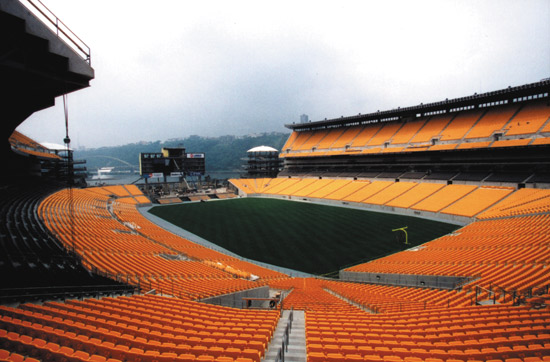Total Acoustical Design
Reflectors
In some rooms, it is desirable to help direct and channel the sound toward the listeners. In those cases, wall and ceiling surfaces need to act as large-format reflectors in a pattern appropriate to the room configuration and use. This is particularly true in performance venues with larger spaces containing a fixed stage and fixed seating. In this application, carefully placed reflectors can very effectively direct the sound coming off the stage to every seat in the house, making for a better listener experience. In order to maintain the aesthetic design requirements for this type of performance space, the reflectors can be made from a variety of materials including real wood or wood veneer over a reflective aluminum core, sometimes with an extra backer for mass. This allows for the proper mix of aesthetic and acoustic properties that can become part of the overall visual and sound qualities of the space. Since most of these installations are custom designed, complex geometries using different panel types can be provided by manufacturers as a complete system that also includes lighting trims and utility troughs. From an operations standpoint, these reflectors can sometimes be fabricated using torsion springs to allow accessibility behind them for maintenance, repairs, etc.
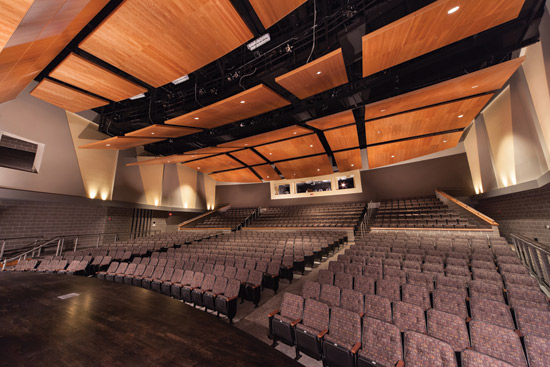
Photo courtesy of Ceilings Plus®
Sound reflectors used on a ceiling help to direct sound towards the listener and enhance the audience experience.
Random Diffusers
Not all spaces require pure sound absorption or pure reflection. Rather, many require a mix to achieve the best acoustical properties. In these situations, sound diffusion may be the best approach such that sound is dispersed somewhat randomly throughout a space. Portions of the wall and ceiling treatments are treated to be sound absorptive while other portions are reflective, all with the same or varied finishes. There are many choices available, including some manufactured modules using the same finish material that can be micro perforated and filled with sound-absorptive material in some areas or left whole in others in order to be more reflective. These modules can be arranged in a multitude of different patterns to give the designers and acousticians complete control of both the aesthetic and acoustical intent. In this way modules can be spaced in an arrangement that creates random sound diffusion with a pleasing scattering of sound reflections and still create a beautiful visual aesthetic.
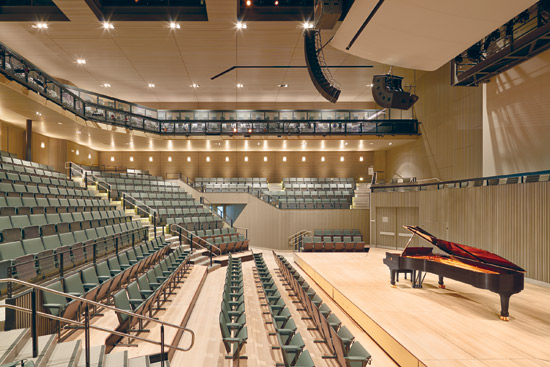
Photo © Tim Griffith, courtesy of Owens Corning
The San Francisco Jazz Center includes sound-absorbing duct liner in HVAC ductwork to eliminate unwanted background noise.
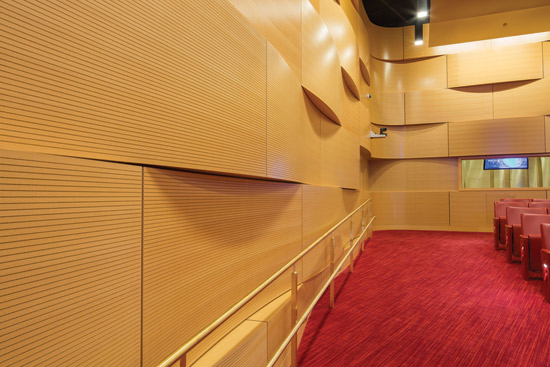
Photo courtesy of Rulon International
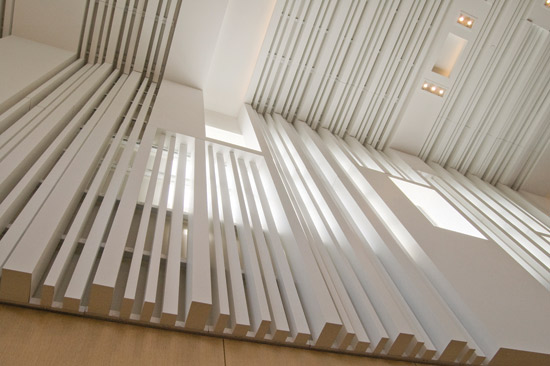
Photo courtesy of Ceilings Plus®
Undulating acoustically treated wood panels and strips of acoustical material can be arranged to create random sound diffusion and add to the visual experience of rooms as well.
Broad Band
Some spaces need to pay particular attention to the range of sound that is being controlled. Busy, active places may find that sound frequencies are being generated across a broad band—from very low-frequency background noise through mid-range conversation and operational sounds, up to very high-range music or equipment sounds. In this case, different treatments may be appropriate for different frequencies, but the aesthetic demands may require a more uniform appearance. Products are available that can achieve the needed sound control beautifully by sometimes using complex curves and undulating shapes. These systems can achieve NRC values that range from .75 to .95 making them very effective for broadband noise control in large spaces, adding to the speech intelligibility and luxury of the interior.
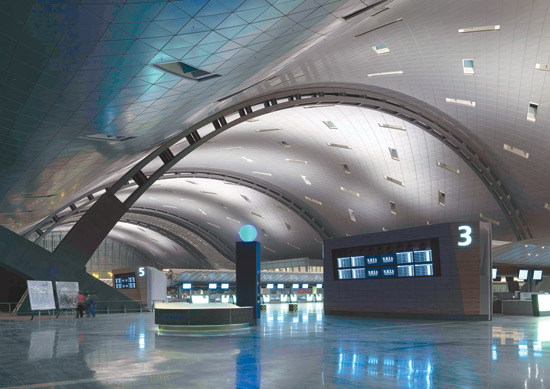
Photo courtesy of Ceilings Plus®
Certain spaces that need to address a broad band of sound frequencies need to be treated accordingly, particularly if their shape is prone to reflect more sound than desired.
Notice

www.ceilingsplus.com

OCBuildingSpec.com
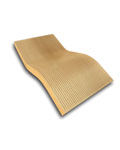
rulonco.com





